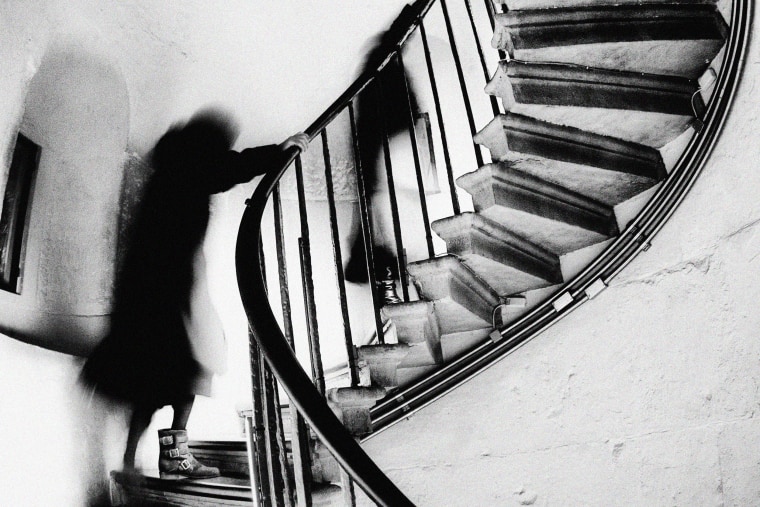Children under 3 and adults over 85 are the age groups most commonly injured from falling down stairs, but the third-most likely group is often overlooked, experts say: young adults in their 20s.
So in a study published Wednesday, a team of researchers at Purdue University focused on that cohort, analyzing particular behaviors that lead young adults to fall on stairs and how much those behaviors varied between men and women.
Using concealed cameras, the team recorded more than 2,400 students walking down short and long staircases on Purdue’s campus. They then measured eight risk behaviors associated with falls: footwear choice, handrail use, looking at one’s feet, using an electronic device, skipping steps, placing hands in pockets, talking while walking and carrying objects while walking.
The results, released in the journal PLOS One, indicate that more than 69% of the subjects analyzed in the study exhibited two or more risky behaviors. Approximately 80% of women fell into this category, compared to about 62% of men. Women were also less likely to use a handrail and more likely to be carrying objects while walking, the study found.
The researchers categorized the sexes of the students they observed based on appearance and did not account for gender-nonconforming people.
Neglecting to look at one’s feet while walking was a particular indicator of risk, according to Shirley Rietdyk, an author of the study and professor of kinesiology at Purdue University. Every participant who lost balance was not looking at the tread, according to the study.
She said she got interested in studying young adults’ falls after working on a smaller 2021 study on a similar topic. That study surveyed 343 undergraduates and found that a high rate of physical activity was a key reason they get injured in falls: sports, walking and running were the top three activities at the time of falling. Stairs accounted for 12% of the falls students reported.
“If you think about how much time you actually spend on stairs in the day, it’s going to be less than 1%,” Rietdyk said, adding that may make stairs “the most common serious hazard that we regularly deal with in our daily lives.”
In the new study, women were found to be significantly more likely to be speaking to another person while walking down the stairs.
“When we found that women were talking to a friend more than men, it was like a groan because we’re confirming the stereotype, which you never want to do,” Rietdyk said. “But when we only looked at people who were walking with someone else, there was no difference in the rate of talking, so it’s not that women talk more than men — it’s that they’re more likely to be with a friend than a man is.”
Gender disparities in injuries from falls extend to age groups beyond the early 20s. A 2018 analysis of emergency department data found that women accounted for more than 62% of the 24 million people who visited emergency departments for such falls over a 20-year period.
However, that trend wasn’t the case for children 10 and younger — girls accounted for about 44% of emergency room visits in that group. The share jumped to about 64% for people from 11 to 60 years old, and to about 70% for those 61 and older.
Dr. Gary Smith, director of the Center for Injury Research and Policy at Nationwide Children’s Hospital in Columbus, Ohio, was the lead author of that 2018 study. He suggested that women may fall on stairs more often because of balance challenges that arise during pregnancy and the tendency to wear less stable shoes. Time spent at home, where stairs are more likely to be found, may also play a role, he said.
“Most of these injuries were occurring in the home,” said Smith, who was not involved in the new study. Mothers accounted for 83% of stay-at-home parents in 2016.
“There are many women who stay at home, work at home as moms, so they’re going to be exposed to stairways in homes more than males during those years,” he added.
Smith also highlighted a few limitations in the new research: First, the campus staircases were generally wider than those found in homes, making it more likely someone would be talking to another person and less likely they would grip a handrail. Second, the study was small and focused on a specific population.
Nonetheless, he said, the findings are a useful addition to existing research.
“It’s clearly consistent with and supports concerns that people have raised over the years about these falls,” Smith said. “This is a very common source of injury, and there are things that people can do to prevent them.”
